In the late 1880s, Henry Waters Hartman (1850-1913), a wealthy industrialist and steel man operating in Beaver Falls, Pennsylvania, envisioned starting a manufacturing center and town on a plateau along the Connoquenessing Creek near the southeast corner of Lawrence County. In 1889 he resurrected a dormant land venture outfit as the Pittsburg Company and set about purchasing large plots of property in the area. By 1892 he had officially named his new settlement Ellwood (later Ellwood City) in honor of his friend Isaac L. Ellwood, a pioneering force in the manufacture of barbed wire.
A big boost to his venture was the fact that plans were being formulated by the Baltimore & Ohio Railroad (B&O) to run a new track route through the same area. The Pennsylvania Railroad (PRR) and the Pittsburgh & Lake Erie Railroad (P&LE) had already established routes along the Beaver River, so the B&O decided to expand its route from Pittsburgh to Chicago along the Connoquenessing Creek and up towards New Castle. The B&O plans worked in perfect harmony with the new manufacturing center that Hartman was working to establish.
Back in August 1879, the Pittsburg & Western Railroad (P&W) was organized from the demise of a short-lived railroad company. Within a few years, the P&W completed a short-gauge line in western Pennsylvania. A portion of its line ran from Pittsburgh to New Castle Junction, which ran along the western and northern banks of the Connoquenessing Creek. The track ran from Zelienople to North Sewickley, passed through Frisco and up to Wurtemburg, banked west through Hazel Dell en route to Rock Point, and headed north to Chewton and New Castle.
The B&O bought a controlling interest in the P&W in 1884 and worked out an agreement to use its Pittsburgh-New Castle route to expand its service to distant Chicago. The P&W route through Frisco-Wurtemburg-Hazel Dell (around the general area that became known as Ellport) was hilly terrain and not suited to easy travel by long columns of trains. In 1889 Hartman and his Pittsburg Company – in perfect harmony with the plans of the B&O – decided to build a railroad bypass in the area. The route would feature a direct shortcut from Frisco – through the area that became Ellwood City – to reconnect with the main P&W line above Rock Point. This difficult plan called for building a bridge across the Connoquenessing Creek at Frisco, boring a tunnel through the hillside on the opposite bank, running track across the wide plateau, and building a second bridge across the Connoquenessing near Park Gate. Hartman was generally able to freely secure the lands and right-a-ways needed for the railroad but had legal troubles (mainly dealing with water supply issues) with several landowners in the Frisco area. Landowners Smith Hazen and Simon Fisher were among those who later received settlements for damages on their properties.
Construction of the two single-track railroad bridges and the tunnel started in about late 1889, after officials of the P&W, under the direction of French-born chief engineer Paul Didier, surveyed and finalized the actual route. About 100 feisty Italian craftsmen worked on the excavation and construction of the 694-foot Ellwood Tunnel, which was primarily located on lands purchased from local resident Coston Burns. It was lined with stone walls and a brick roof and was first broken through to daylight in January 1891. The adjoining railroad bridge at Frisco, which led directly into the tunnel, was completed about two months later. Work on finishing the tunnel, laying the track across the plateau, and completing the second railroad bridge was also near completion. The first train, bearing 300 people from Butler, came across the Frisco Bridge and through the Ellwood Tunnel on Thursday, July 23, 1891. The newly-completed shortcut, totaling about three miles long, was known as the Ellwood Short Line. The burgeoning town of Ellwood City rapidly grew in size and importance during the 1890s and the Ellwood Short Line – soon leased to and eventually acquired by the P&W/B&O – played a major role in that development. The old P&W track above Ellwood was abandoned and fell into despair.
In February 1902 the B&O took control of all operations of the floundering P&W. About a decade later, in November 1912, the P&W was dissolved and incorporated into the B&O outright. At that same time, the remaining narrow-gauge tracks of the P&W were replaced with the standard gauge familiar to most railroad companies. In early 1908, according to newspaper reports, working began on replacing the railroad bridge at Frisco with a newer span. Train service was not interrupted so I am guessing that a new span was built alongside the existing bridge. I’ll keep researching this issue to figure this out. The only obvious evidence of the new work is a “1907” carved into the bridge’s large retaining wall along River Road.
Over the years several accidents have occurred in or near the tunnel. The most serious was on the morning of Sunday, August 6, 1922, when a westbound freight train of sixty cars, traveling slowly through the tunnel due to a faulty brake issue, was struck in the rear by a faster-moving passenger train. The impact occurred near the middle of the tunnel and resulted in the injury of thirty-six people and severe damage to several cars. Numerous errors by train personnel contributed to the collision.
Over the years the tunnel has seen partial collapses and the worst probably occurred in mid-2004 when a large portion of the brick ceiling caved in. The tunnel was closed for a few months but was soon repaired and put back in service. Ellwood City is not the hotbed of railroading activity it once was in Hartman’s time, but once or twice daily freight trains of the regional Buffalo & Pittsburgh Railroad (BPRR) – passing between Butler and New Castle – still use the bridge and tunnel today.
To read a short mention about the tunnel being bored all the way in January 1891 through click on: DAYLIGHT ARTICLE. To read about the progress of the bridge and tunnel in Frisco in March 1891 click on: PROGRESS ARTICLE. To learn more about the Ellwood Short Line changing ownership in 1898 click on: LANDED IT ARTICLE. In November 1902 the roof of the tunnel partially collapsed. To read about it click on: BRICKS FELL ARTICLE. To learn more about how a train wreck was prevented near the tunnel in January 1906 click on: WRECK AVERTED ARTICLE. To read an article mentioning that work was about to commence on replacing the Frisco railroad bridge in early 1908 click on: WORK WILL SOON START ARTICLE. To read an article from 1913 mentioning that the abandoned portion of the old P&W main line was about to be reopened click on: RAILROAD IS CLEARED ARTICLE.
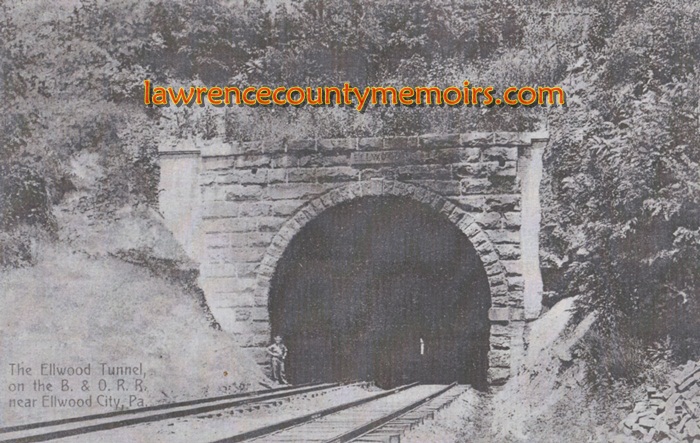 The first train passed through the completed tunnel on Thursday, July 23, 1891. The newly-completed shortcut through Ellwood City, totaling about three miles long, was known as the Ellwood Short Line. (Photo courtesy of Everett Bleakney)(c1900) Full Size |
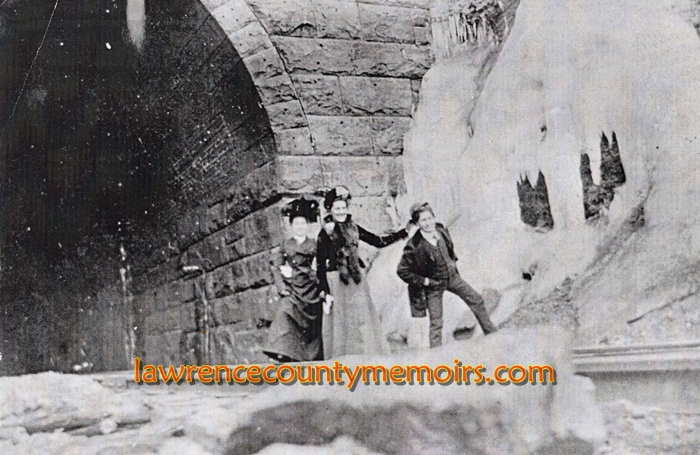 Several people, one of which is identified as Mrs. G. Y. Fike, pose in front of the Ellwood Tunnel during the winter months. I believe Mrs. Fike is the former Eliza J. Jordan, who married George Y. Fike (1870-1963) – who founded the Circle Lumber Company in 1922. (Photo courtesy of Everett Bleakney) (1893) Full Size |
 Skilled Italian workers pose in front on the mostly completed Ellwood Tunnel. (1891) Full Size |
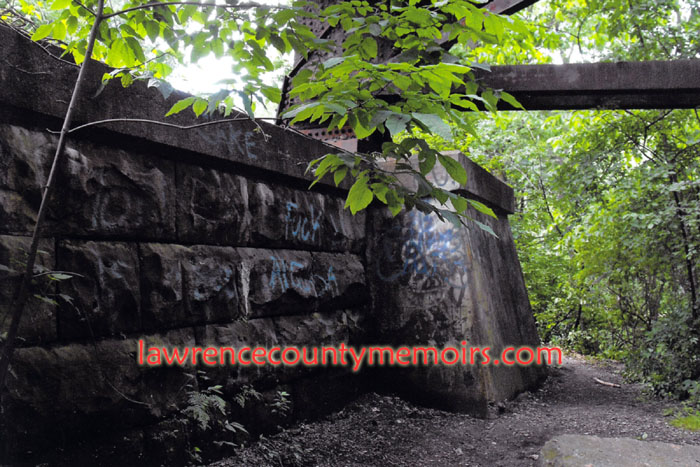 Under the southern end of the bridge by River Road. (Jul 2011) | 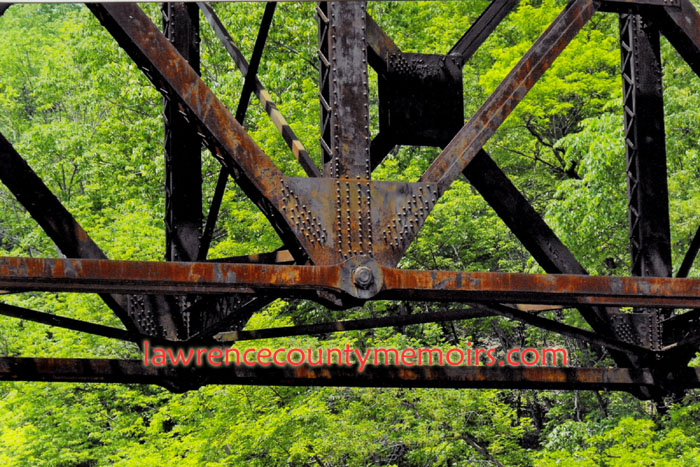 A closeup of some of the bridge work. (Jul 2011) |
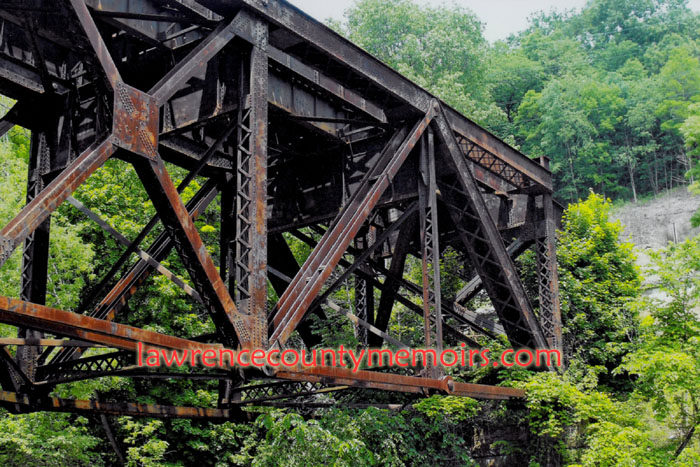 The Ellwood Tunnel sits up above. (Jul 2011) |  The bridge seemingly disappears into the trees. (Jul 2011) |
 Looking westward across the bridge, which still carries trains of the BPRR into the tunnel beyond. (Jul 2011) | 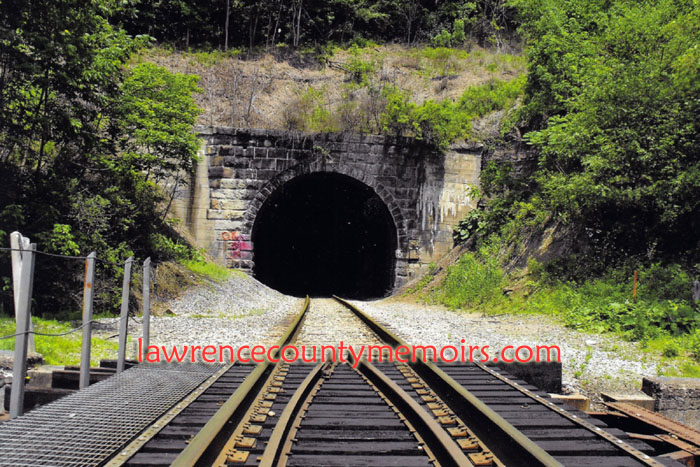 The view as you near the northern end of the bridge and approach the tunnel. (Jul 2011) |
 The southern end of the Ellwood Tunnel. (Jul 2011) |
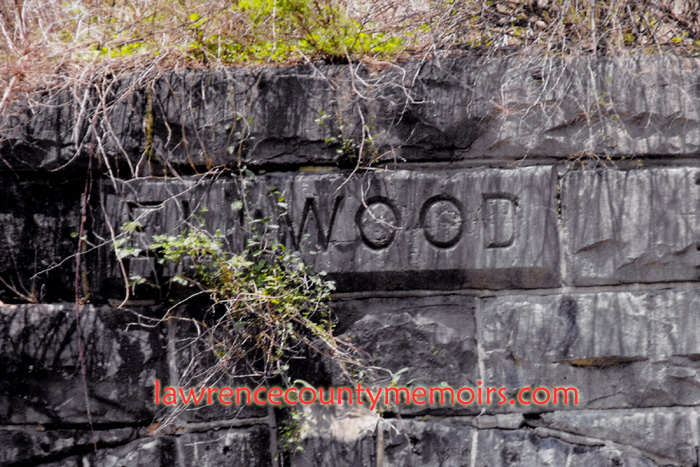 The carved stone above the southern entrance marking the name “Ellwood.” (Jul 2011) | 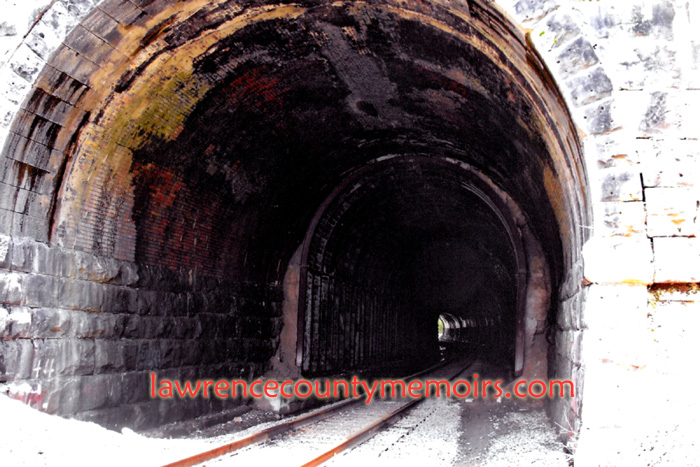 Looking into the southern entrance of the tunnel. (Jul 2011) |
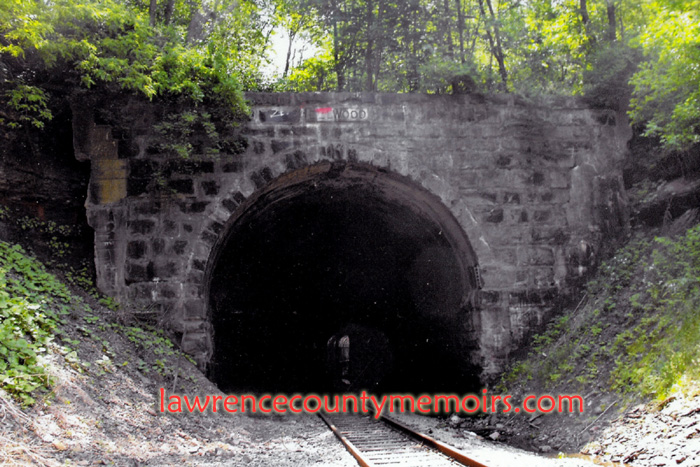 Looking at the northern entrance of the tunnel. (Jul 2011) |  The carved “Ellwood” stone at the top of the northern entrance of the tunnel. (Jul 2011) |
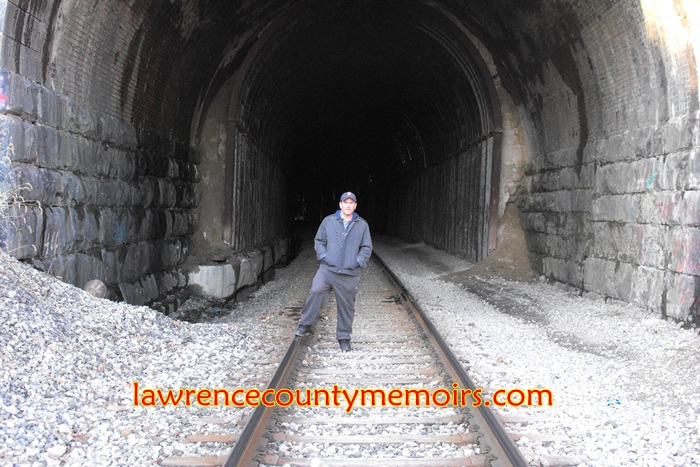 That’s me….standing at the Frisco entrance to the Ellwood Tunnel. (Jan 2012) |
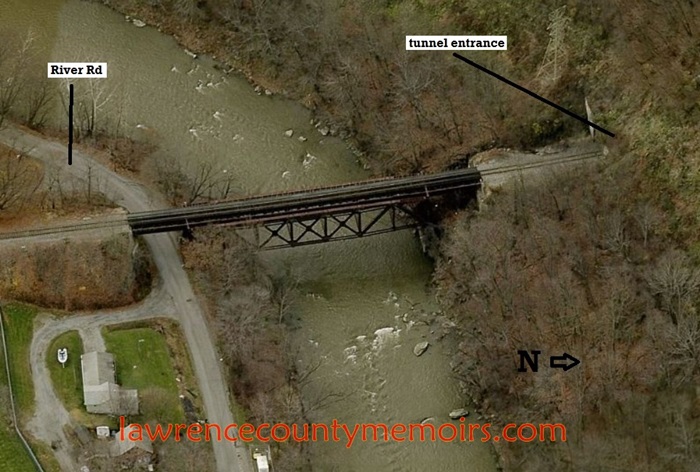 An aerial view of the Frisco Railroad Bridge. (c2014) Full Size |
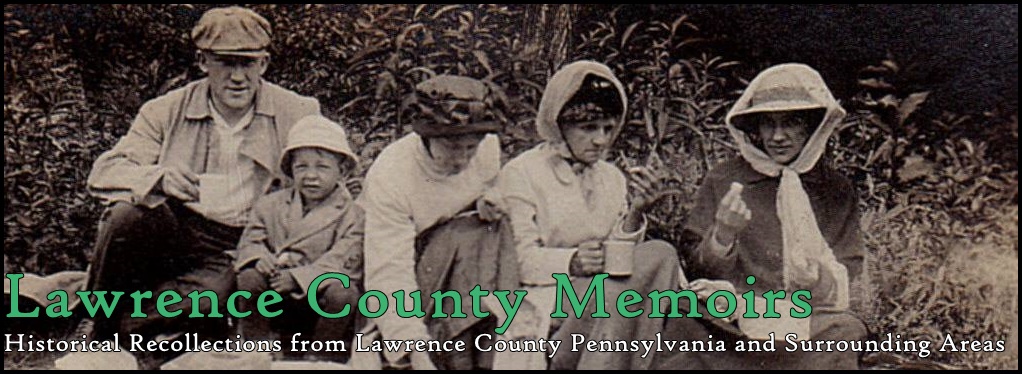



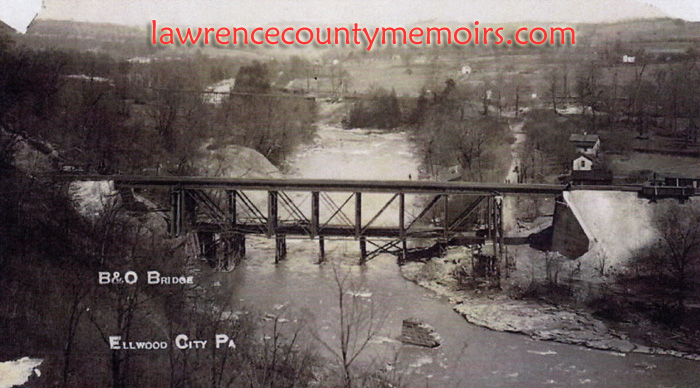
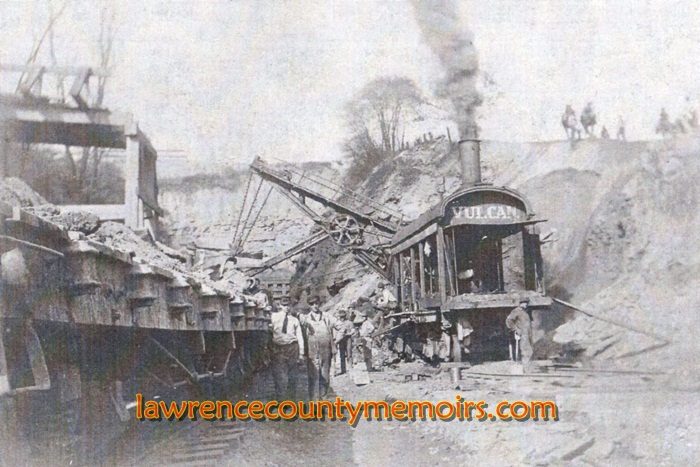
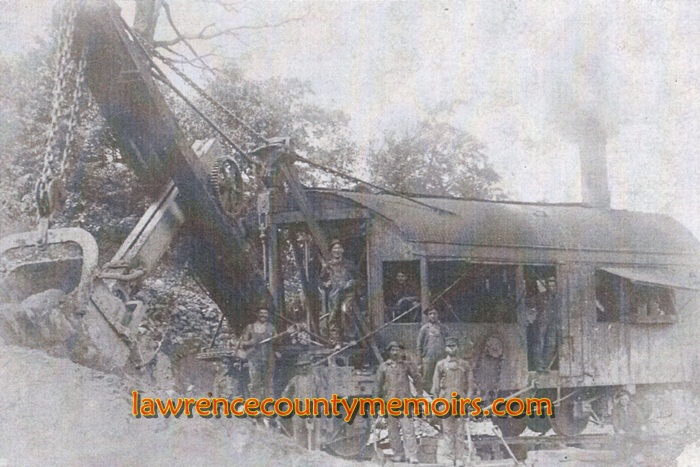
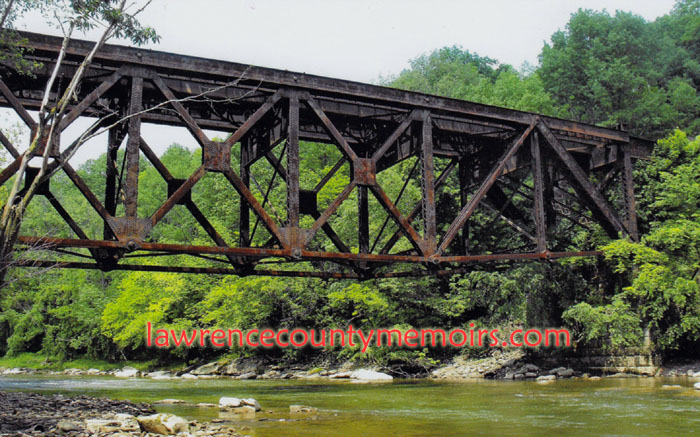
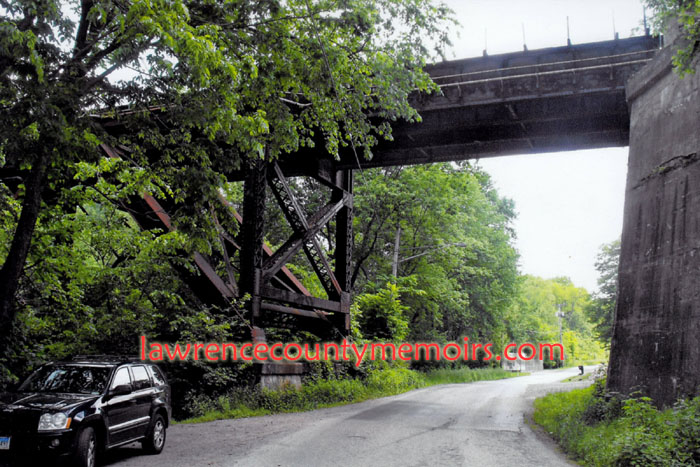
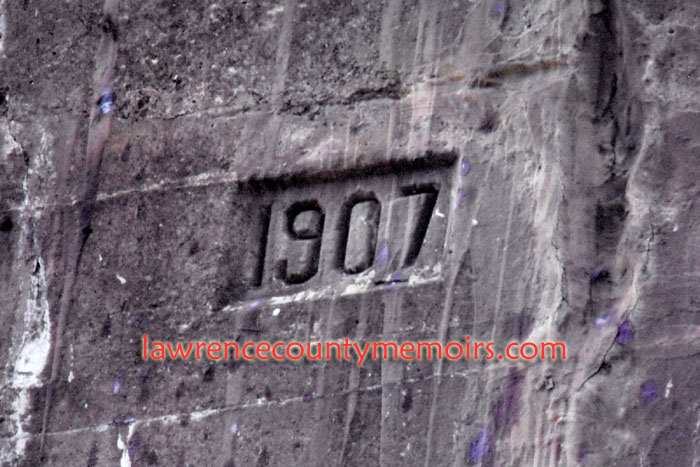
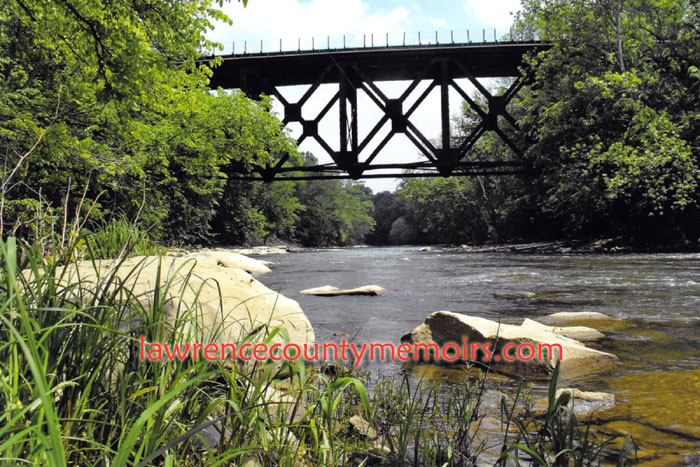
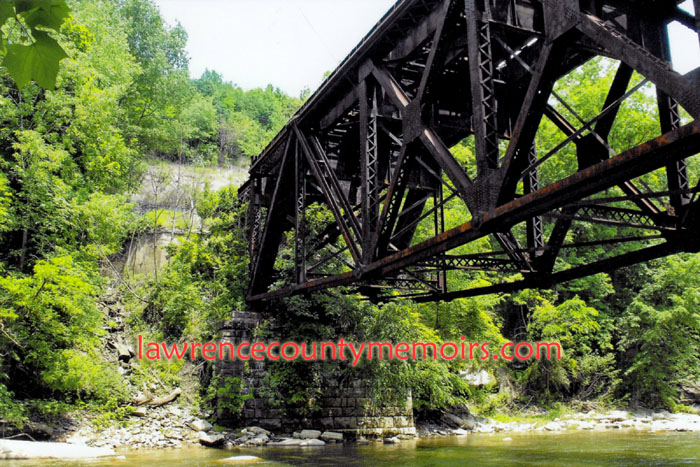
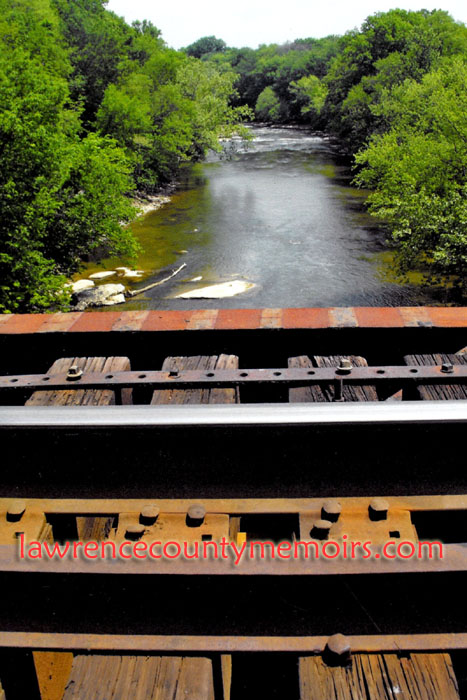
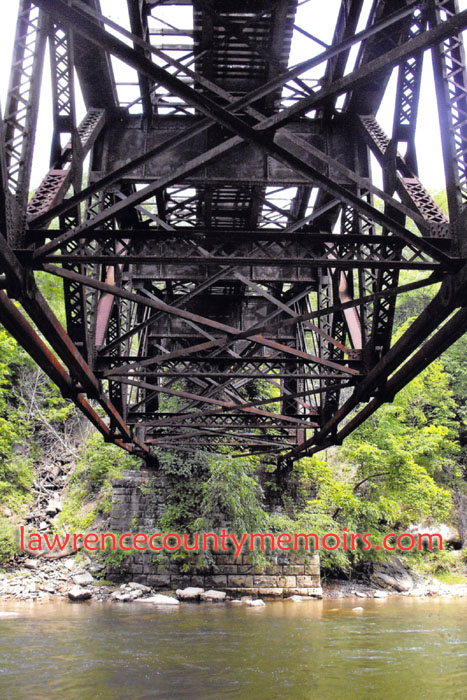
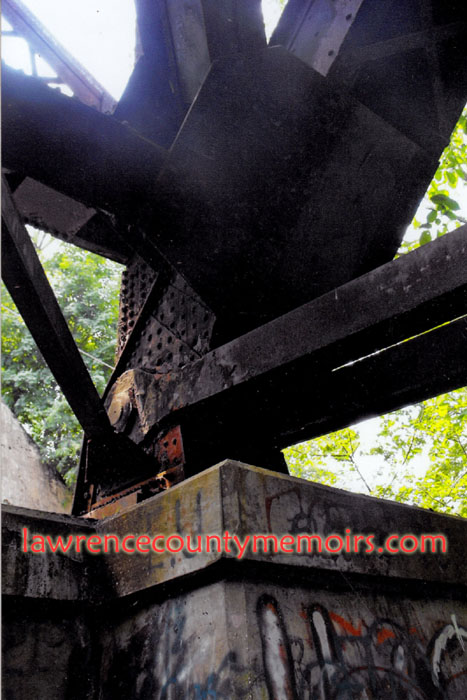
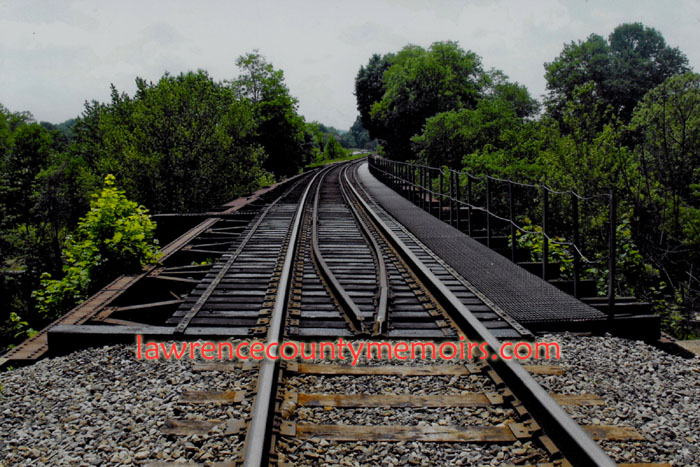
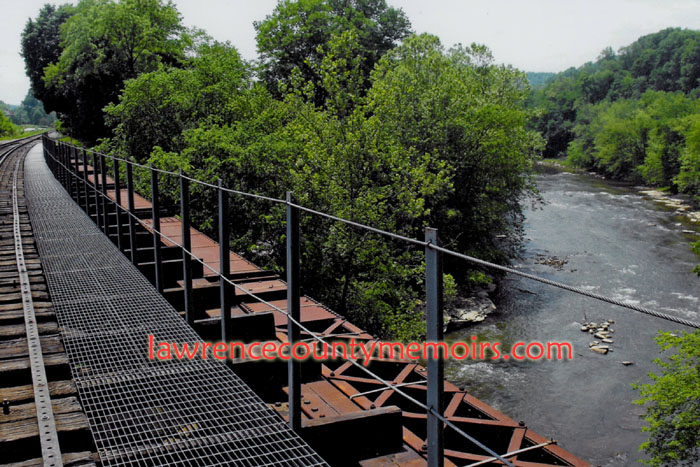
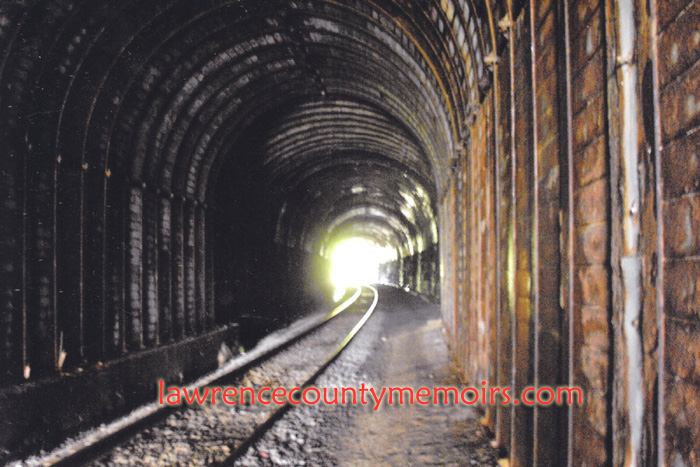
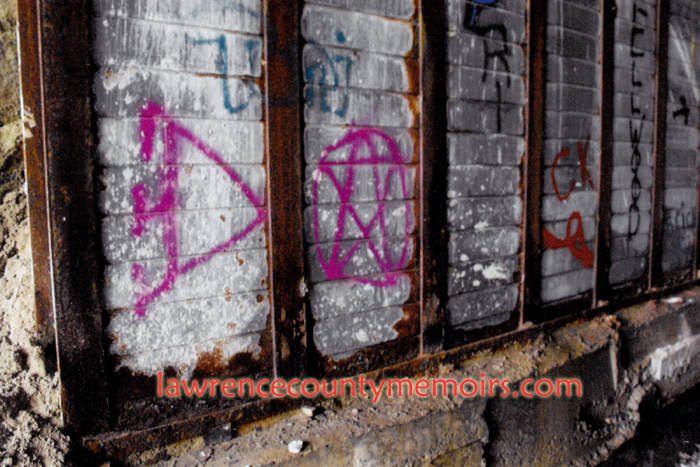
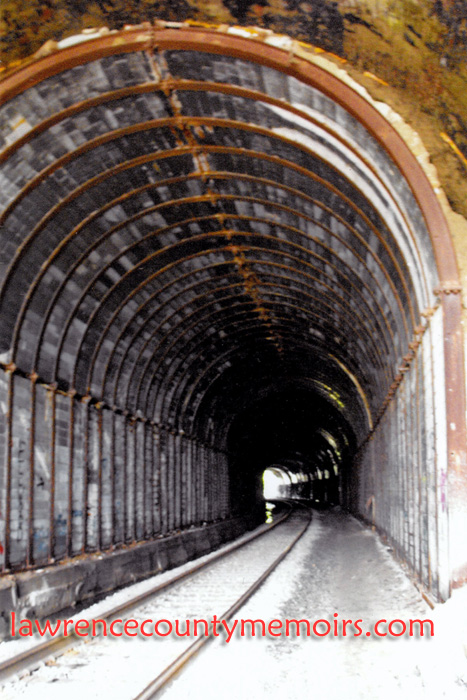

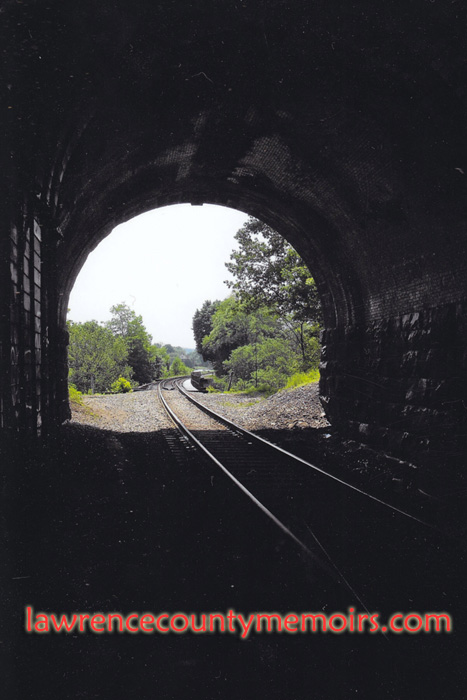
Comments
George Zikeli #
I have walked over that bridge and through that tunnel.
preston st.clair #
ahh the creepy tunnel i walked through to work at loccisanos some days it freaked me out when i heared a train whistle
Robert Parker #
Try it at night! Really creepy!
jerry spencer #
in the very top photo you can see another bridge upstream. i dont think the frisco bridge was built yet. what was that crossing the creek ?
jerry spencer #
in looking closer i see that this photo is looking towards wurtemburg therefore that span crossing the creek must be the trolley that ran behind romar down railroad st in ellport and across 488 into ewing park.
Comment